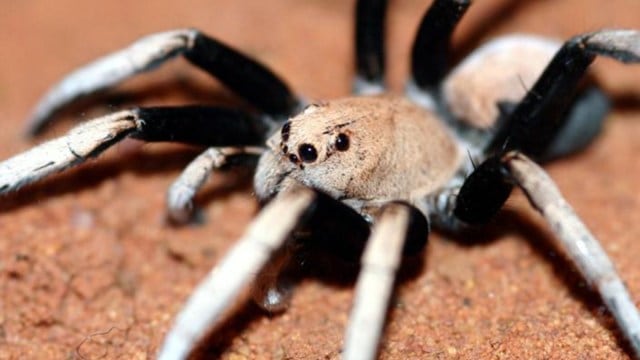📣 For more lifestyle news, click here to join our WhatsApp Channel and also follow us on Instagram
Wolf spiders are already a force of nature but Australia takes it a step further with their two-toned ones
What sets Hoggicosa bicolor apart at first glance is its dramatic colouring—especially in females and younger males.
 Discover Hoggicosa bicolor, Australia’s two-toned wolf spider (Source: Wikimedia Commons)
Discover Hoggicosa bicolor, Australia’s two-toned wolf spider (Source: Wikimedia Commons)When you picture Australia’s wildlife, giant spiders and bold colours might come to mind. But among the lesser-known (and far more elegant) residents of the continent is a spider that doesn’t just live up to those stereotypes—it redefines them. Meet Hoggicosa bicolor, the two-toned wolf spider that’s been quietly crawling through the Australian landscape for well over a century.
Originally described by British-born zoologist Henry Roughton Hogg in 1905, this species is part of the wolf spider family, or Lycosidae—famous for their sharp eyesight and fast, ground-hunting instincts. Unlike your average web-weaving spider, these hunters chase down prey with stealth and speed.
A study in contrast
What sets Hoggicosa bicolor apart at first glance is its dramatic colouring—especially in females and younger males. Imagine a rich contrast of black and creamy white running along the body, making the spider look almost painted. Adult males, on the other hand, shed that striking contrast as they mature, taking on more subdued hues. It’s a rare reversal of roles in the animal kingdom, where males are often the flashier sex.
This natural split in appearance isn’t just for show—it likely plays a role in how these spiders interact with their surroundings and possibly even with each other. It’s one of those subtle but fascinating quirks that tells you evolution had a clever plan.
View this post on Instagram
Where they call home
You won’t find Hoggicosa bicolor lurking in your average urban garden. These spiders seem to prefer the quieter side of life—sun-drenched patches of earth along riverbanks, roadside verges, and open woodlands. Their range stretches across large parts of southeastern Australia, including Queensland, Victoria, and even Tasmania.
They favour firm, compacted ground where they can blend into their surroundings, making their bold markings as much about camouflage as they are about statement.
Wolf spiders don’t rely on webs to catch their dinner. Instead, they pounce on prey with cat-like agility. Their eyes are some of the best in the arachnid world, and their speed gives them a serious edge. Hoggicosa bicolor uses both its keen senses and clever colouring to stay ahead—whether it’s stalking an insect or avoiding becoming a meal itself
Although they don’t attract the same level of attention as more famous Australian critters, Hoggicosa bicolor and its relatives play a crucial role in balancing ecosystems. They help control insect populations and are part of a much bigger story about biodiversity.
📣 For more lifestyle news, click here to join our WhatsApp Channel and also follow us on Instagram
Photos





- 01
- 02
- 03
- 04
- 05





















